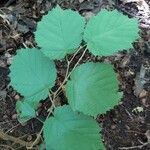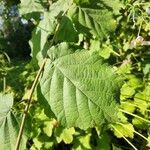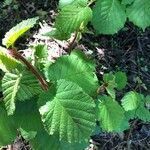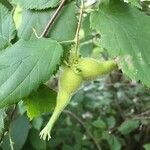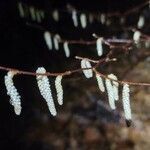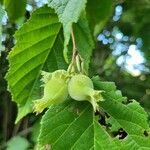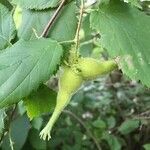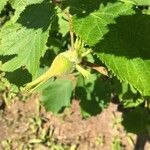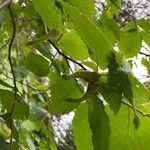Shrub 1–3 m, the young twigs villous at first; lvs oblong or oblong-obovate, short-acuminate, coarsely and doubly serrate, broadly rounded to subcordate at base, pale green beneath and ± pubescent, especially on the veins and in the vein-axils; catkins sessile or nearly so; involucre 4–7 cm, usually densely bristly below, prolonged beyond the nut into a long, slender beak cut at the summit into narrowly triangular lobes; nut short-ovoid, scarcely compressed, 1–1.5 cm; 2n=22. Moist woods and thickets; Nf. to B.C., s. to N.J., Pa., O., Mo., Oreg., and in the mts. to n. Ga. (C. rostrata)
A spreading deciduous shrub. It is erect and 3 m high. The leaves are oval and have lobes. There are teeth along the edges. The flowers are in catkins about 30 mm long. The nut is encased in a long brown or green sheath. They are produced in clusters of 1-4. The nuts are about 12 mm long.
